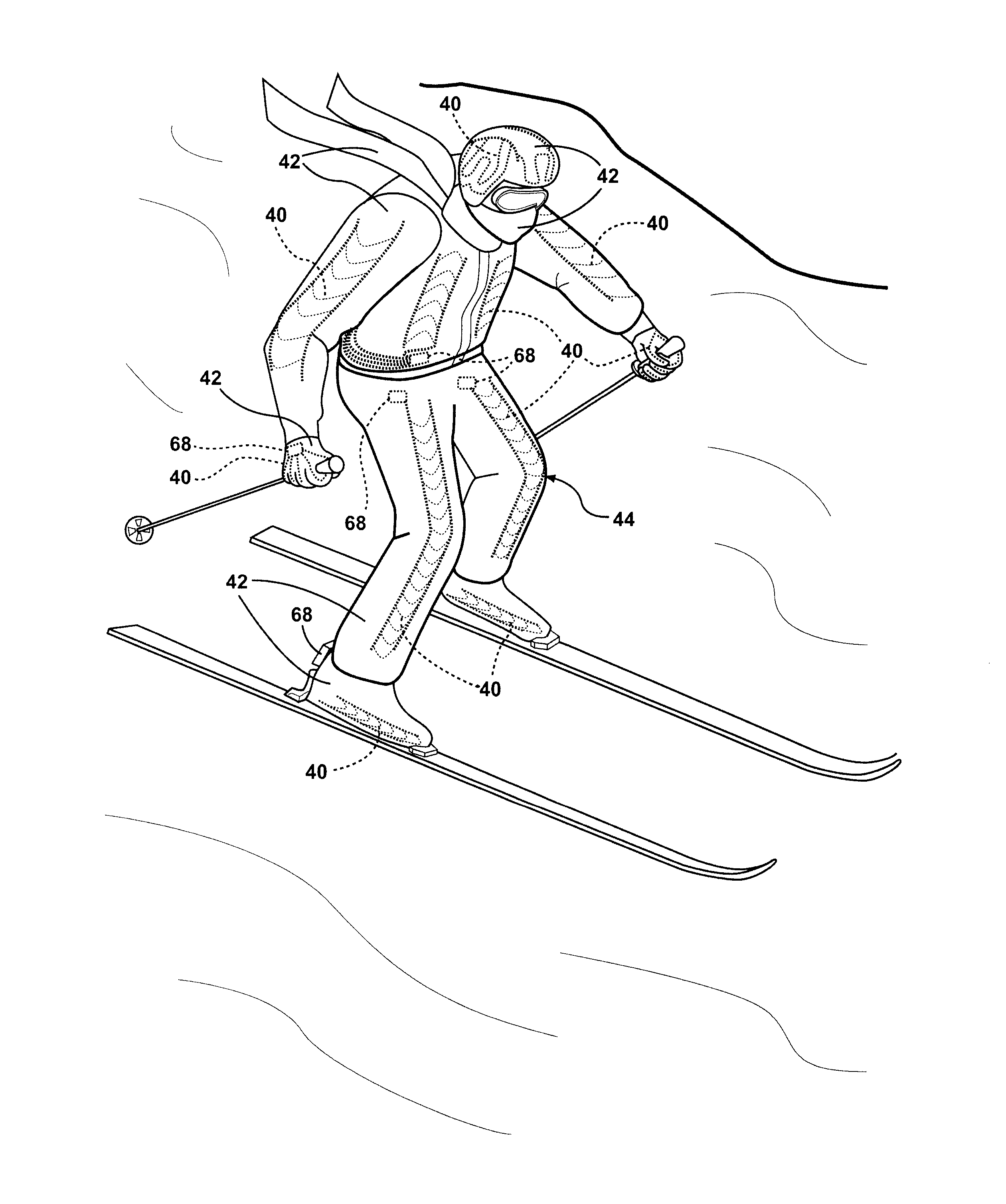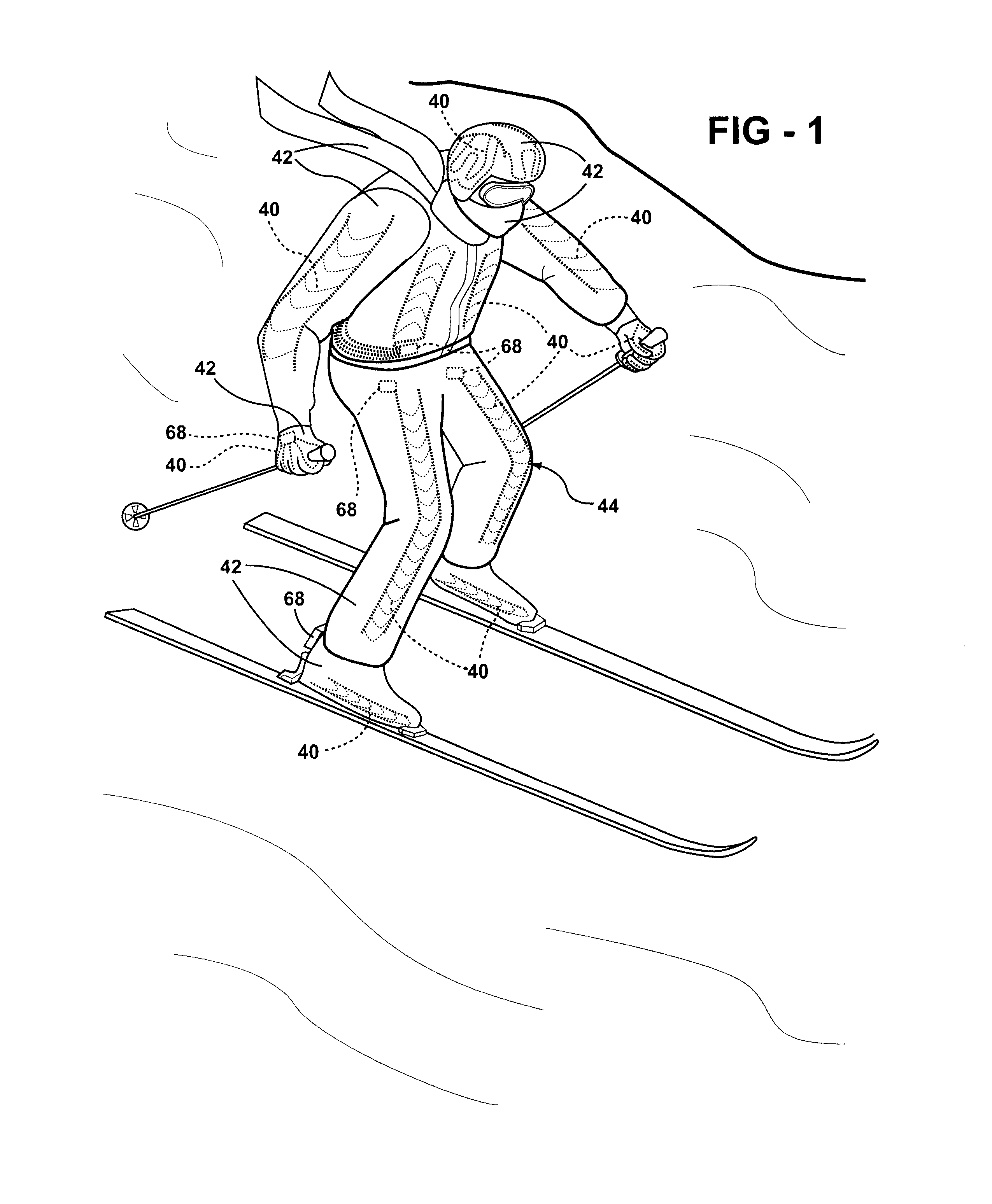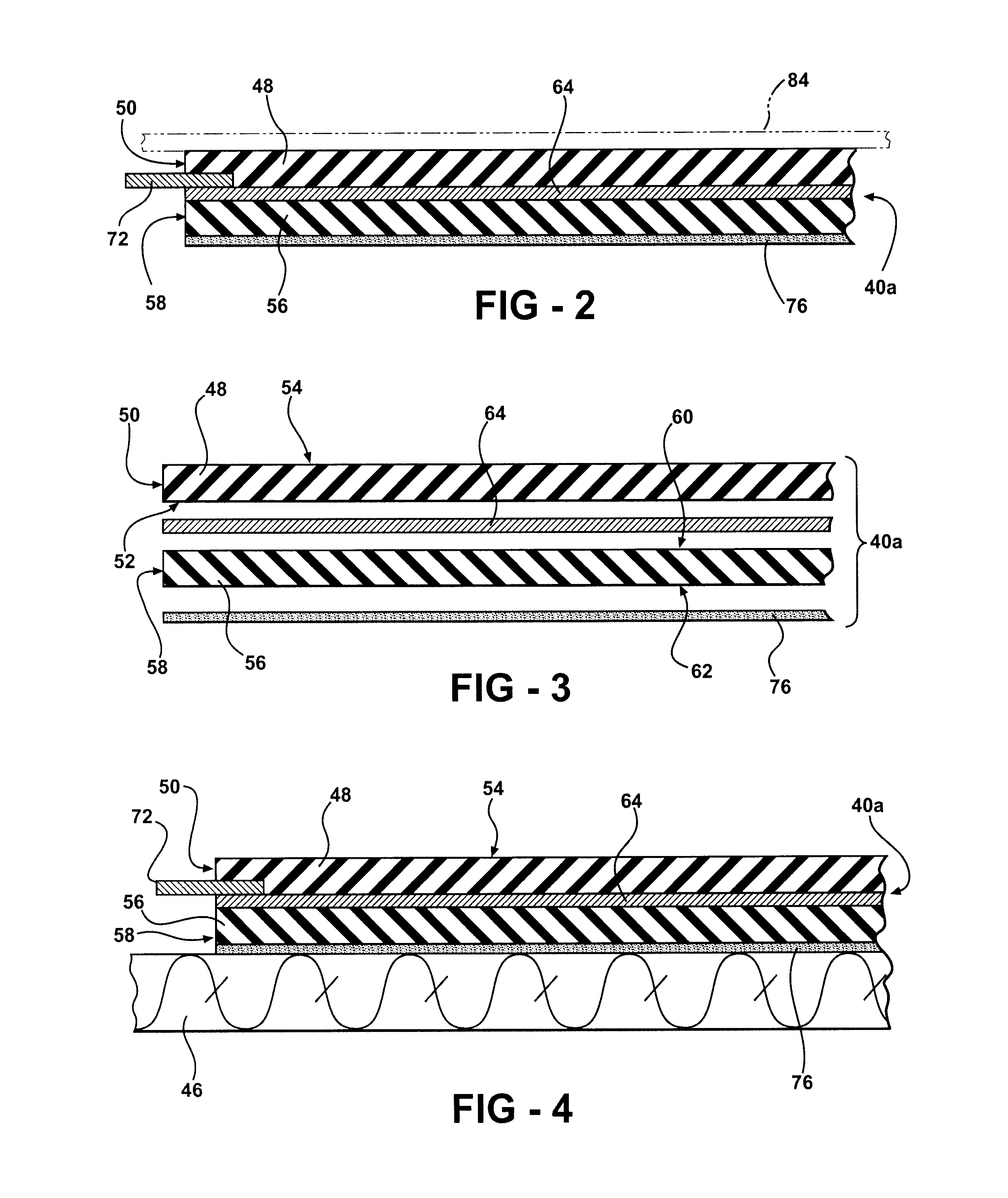Heated textiles and methods of making the same
a technology of textiles and heating elements, applied in the field of composite heating elements, can solve the problems of reducing the service life of the battery, so as to improve the service life and reduce the size of the battery. , the effect of excellent washability
- Summary
- Abstract
- Description
- Claims
- Application Information
AI Technical Summary
Benefits of technology
Problems solved by technology
Method used
Image
Examples
Embodiment Construction
[0048]The present invention provides heating elements suitable for heating an article when activated by a power source. The article may be any type of article known in the art. Non-limiting examples of suitable articles, for purposes of the present invention, include, but are not limited to, jackets, vests, shirts, pants, shorts, bibs, coveralls, seats, mattresses, mattress-pads, pads, sleeping-bags, shoes, boots, ski-boots, snowboard-boots, waders, socks, mittens, gloves, hats, scarves, headbands, ear-muffs, underwear, bandages, neck-gators, face-masks, balaclavas, wetsuits, drysuits, hoods, helmets, wraps, bandages, sheets, blankets, pillows, pillow-cases, comforters, duvet-covers, bags, containers, carpet, flooring, wallboard, and ceiling tile. The composite heating elements are especially suitable for articles worn, such as jackets, gloves, hats, boots, wraps, and bandages. The composite heating elements are also especially suitable for articles laid upon, such as mattresses, be...
PUM
| Property | Measurement | Unit |
|---|---|---|
| thickness | aaaaa | aaaaa |
| thickness | aaaaa | aaaaa |
| tensile strength | aaaaa | aaaaa |
Abstract
Description
Claims
Application Information
 Login to View More
Login to View More - R&D
- Intellectual Property
- Life Sciences
- Materials
- Tech Scout
- Unparalleled Data Quality
- Higher Quality Content
- 60% Fewer Hallucinations
Browse by: Latest US Patents, China's latest patents, Technical Efficacy Thesaurus, Application Domain, Technology Topic, Popular Technical Reports.
© 2025 PatSnap. All rights reserved.Legal|Privacy policy|Modern Slavery Act Transparency Statement|Sitemap|About US| Contact US: help@patsnap.com



